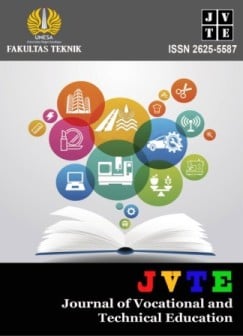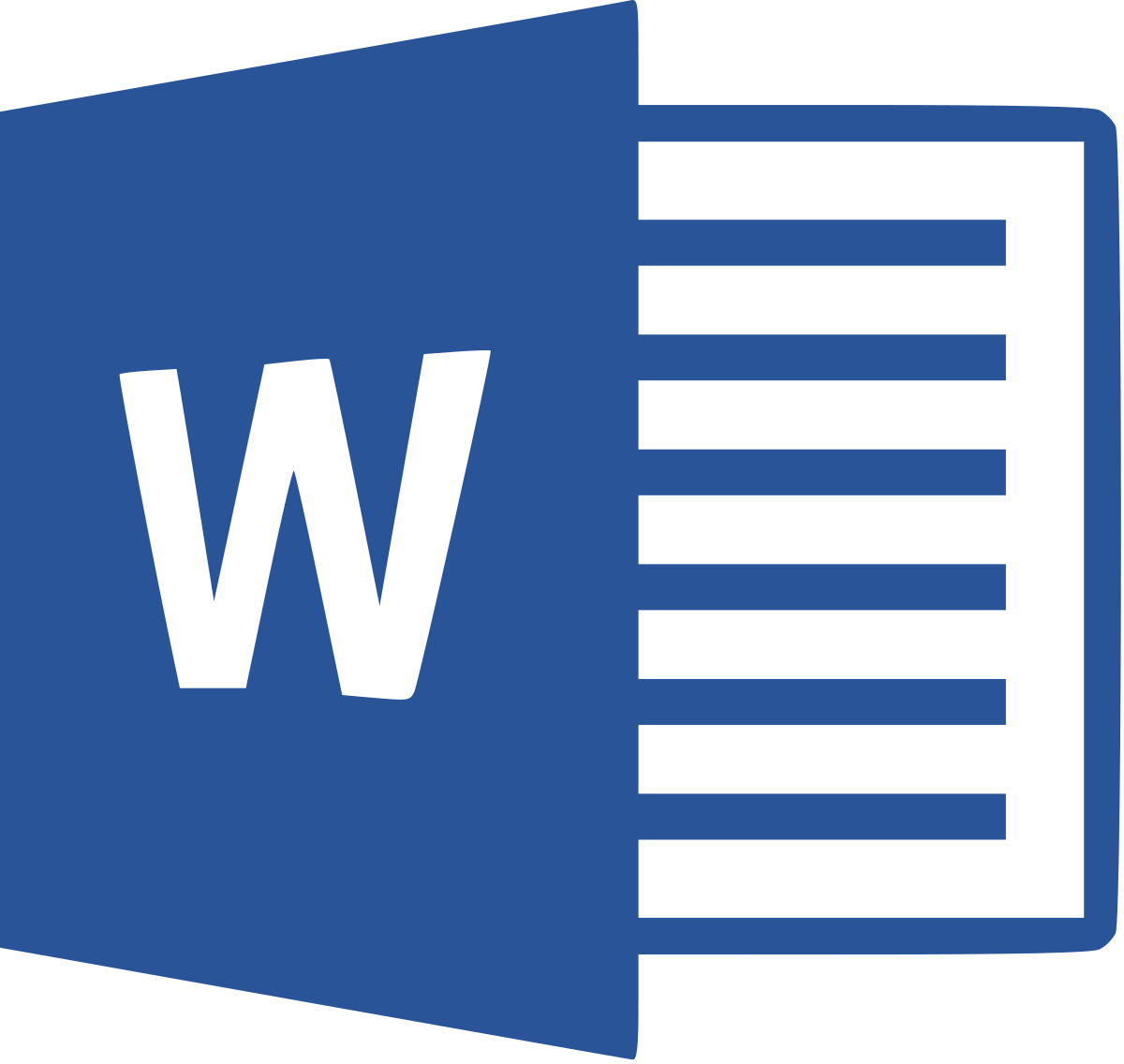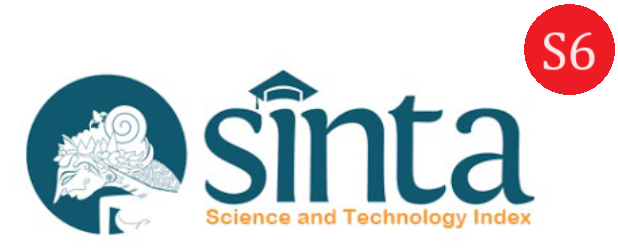PENGEMBANGAN WEB SEBAGAI MEDIA INFORMASI DAN PROMOSI PROGRAM STUDI S1 PENDIDIKAN TEKNIK MESIN JURUSAN TEKNIK MESIN UNESA
DOI:
https://doi.org/10.26740/jvte.v2n1.p41-49Abstract
ABSTRAK
Perkembangan teknologi informasi dan komunikasi khususnya berbasis internet mengalami kemajuan yang cepat. Salah satu perkembangan teknologi informasi dan komunikasi adalah perangkat lunak berbasis web. Pengembangan web telah banyak diaplikasikan pada berbagai bidang. Pada bidang pendidikan, telah banyak institusi/lembaga pendidikan menggunakan web untuk pengembangan institusi/lembaganya. Hal ini dilakukan dengan berbagai tujuan diantaranya sebagai media informasi, komunikasi, promosi, transaksi elektronik, publikasi dan lain sebagainya. Selama ini jurusan teknik mesin belum mempunyai web sebagai media informasi dan komunikasi prodi S1 Pendidikan Teknik Mesin. Berdasarkan fakta tersebut, tidak berlebihan kiranya akan dilakukan penelitian pengembangan web sebagai media informasi dan promosi program studi S1 pendidikan teknik mesin jurusan teknik mesin. Untuk mencapai tujuan tersebut di atas, maka metode yang digunakan melalui beberapa tahapan meliputi: planning (perancangan web), designing (mendesain web), dan testing (pengujian web). Berdasarkan hasil penilaian responden terhadap website yang dikembangkan maka dapat disimpulkan bahwa 80% responden menilai baik sedangkan 20% responden menjawab kurang. Pengembangan website tidak berhenti pada penelitian ini karena akan terus dikembangkan dalam menunjang visi misi Jurusan Teknik Mesin sebagai media informasi, promosi dan silaturahmi Jurusan Teknik Mesin khususnya prodi S1 PTM.
Kata Kunci: pengembangan website, media informasi, promosi.
ABSTRACT
The development of internet-based special information and communication technology is growing rapidly. One of the developments in information and communication technology is web-based software. Web development has been widely applied in various fields. In the field of education, many educational institutions / institutions have used the web to develop their institutions/institutions. This is done with various purposes as a medium of information, communication, promotion, electronic transactions, publications and so forth. During this time the department of mechanical engineering does not have a web as a medium of information and communication in S1 Mechanical Engineering Education. Based on these facts, it would not be excessive to do web development research as an information media and a promotion program for S1 engineering education majoring in mechanical engineering. To achieve the above objectives, the method used through several stages includes: planning (web design), designing (web designing), and testing (web testing). Based on the results of respondents' responses to the developed website it can be denied 80% of respondents received both when 20% of respondents answered less. Website development does not stop at this research because it will continue to be developed in supporting the vision and mission of Mechanical Engineering as a media of information, promotion and friendship of the Department of Mechanical Engineering specifically for the PTM S1 study program.
Keywords: website development, information media, promotion
References
[2] Arikunto, Suharsimi, 2006. Dasar-Dasar Evaluasi Pendidikan.,Jakarta: PT. Bumi Angkasa.
[3] Darma, Jarot S dan Shenia Ananda. 2009. "Buku Pintar Menguasai Internet". Jakarta : Media Kita.
[4] Fandy, Tjiptono. 2010. "Strategi Pemasaran". Yogyakarta: CV ANDI OFFSET"
[5] Hady, Labiqul Mohammad. 2013, œPembuatan Website Sekolah Menengah Pertama Negeri Gatak. Maret Volume 2, No.1.
[6] Idris. 2010. œPerancangan Web Profile sebagai Penunjang Media Promosi Pada PT. Harmoni Prima Perkasa (Bread Lover). Tangerang: Laporan Skripsi, Perguruan Tinggi Raharja.
[7] Indrayani, E., dan Humdiana. 2010. "Sistem Informasi Manajemen Mempersiapkan Pekerja Berbasis Pengetahuan Dalam Mengelolah Sistem Informasi". Jakarta: Mitra Wacana Media.
[8] Komala, Lukianti. 2010. "Panduan Mudah Merancang Bagunan", Jakarta: Niaga Swadaya.
[9] Kurniawan, Edi. 2013. œPerancangan Website Profile Bisnis Pada Pabrik Gula PG. Godang Baru Klaten. Yogyakarta: Laporan Skripsi, Amikom.
[10] Nugroho, Adi. 2011. œVisual Web Developer Untuk Pengembangan Aplikasi Web Dinamis. Jakarta: CV ANDI OFFSET."
[11] Nurhadi, Akmal. 2011. œPerancangan Web Profile Sebagai Penunjang Promosi Dan Informasi Pada SMK Dewi Sartika Kota Tangerang. Tangerang: Laporan Skripsi, PerguruanTinggi Raharja.
[12] Prasetio, Adhi. 2010. "Buku Pintar Pemograman Web". Jakarta. Media Kita.
[13] Rahardja, Untung, Augury El Rayeb dan Asep Saefullah. 2009. œSiapa Saja Bisa Membuat Website Dengan CSS Dan HTML. Tangerang:CV ANDI OFFSET."
[14] Rifai. 2010. œPerancangan Web Profile Sebagai Media Promosi Pada Pondok Pesantren Modern Subussalam Kresek Tangerang. Tangerang: Laporan Skripsi, Perguruan Tinggi Raharja.
[15] Sidik, Betha., dan Husni I.Pohan. 2012. "Pemograman Web Dengan HTML". Bandung: Informatika.
[16] Susanto. 2009. œPerancangan Desain Web Profile Sebagai Salah Satu Penunjang Informasi SMK Teknologi Grafika Darul Amal Tangerang. Tangerang: Laporan Skripsi, Perguruan Tinggi Raharja.
[17] Trianggono. 2010. œEnriching Perancangan Desain Website Pemesanan Secara Online Pada CV. Al-dino. Tangerang: Laporan Skripsi, Perguruan Tinggi Raharja.
[18] Wibowo, Tri Aan. 2013, œPerancangan WebsiteBiro Perjalanan Wisata Dita Tours Pacitan. Maret Volume 2, No.1.
[19] Wulansari, Puspita Ike. 2012, œPembuatan Website Profile Pasar Minulyo Menuju Pasar Nasional Kabupaten Pacitan. April Volume 10, No.3.
Downloads
Published
How to Cite
Issue
Section
 Abstract views: 1432
,
Abstract views: 1432
, PDF Downloads: 5080
PDF Downloads: 5080






